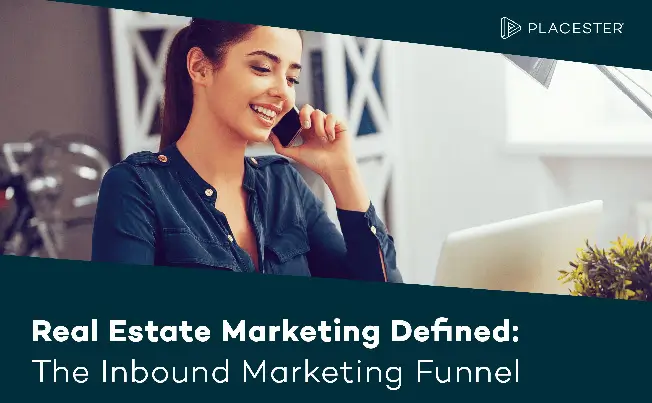You, the modern agent, are also a marketer. You may not think you are, but when you’re writing detailed blog posts, showing your latest listings, and networking at local events, you’re marketing yourself and your Realtor business.
On the other hand, you, the busy agent, don’t have time to keep up with every new digital marketing trend that could prove profitable for your brand, given you’re conducting all of the aforementioned promotional tactics (and quite a few more, if you’re doing it right).
It’s because of these time and energy demands that oftentimes prevent agents such as yourself from catching up on the latest and greatest marketing techniques, terms, and ideas many other professionals are leveraging for their companies. But that doesn’t have to remain a concern for you any longer — thanks to this new Placester Academy series.
In our Real Estate Marketing Defined series, you’ll learn all about the must-know marketing trends that can transform your business for the better — and we start with one of the popular marketing concepts of the 21st century you should incorporate into your plans: inbound marketing.
“So … what does inbound marketing even mean — and how does it apply to real estate agents like me?”
We’re glad you asked. To start, let’s define what inbound marketing isn’t. It isn’t a strategy the utilizes offline or outbound tactics like newspaper ads or billboards. It isn’t an approach that incorporates cold-calling contacts to gauge their interest. Most of all, it isn’t an intrusive marketing method — like those of decade-plus ago — in which you overtly and heavily promote your brand to everyone, in turn annoying … well … everyone.
Nope, inbound marketing isn’t any of these things. It is, however, the best means for you to connect with the people who matter most for your real estate business: the typical audience you have historically worked with. This could be novice home buyers, experienced home sellers, the luxury market, the vacation home demographic — whoever tends to hire you most often.
Inbound marketing is the best means to connect with your niche audience.
As it pertains to your agency, inbound is the act of setting up your online presence (from your IDX website to your social media accounts), developing digital promotional plans (primarily, your drip email campaigns), and continually optimizing all of these outlets and techniques (mostly for your SEO strategy, buyer personas, and brand positioning) over time to attract your target audience to your internet-based channels and nurture them into leads and clients with educational materials.
In short, inbound is all about enticing the right buyers and/or sellers through sharing materials and resources that make them want to engage with you, rather than figuratively shoving your self-promotional messaging down their throats with over-the-top, aggressive, and — most importantly — wasteful marketing schemes.
As renowned marketing consultant and motivational speaker Simon Sinek once noted, “People don’t buy what you do — they buy why you do it.” So, instead of telling people why you’re the best agent around, show them — prove to them your history of success, share your vast industry knowledge, and exhibit your determination to get the job done right … and do it all online.

“Okay, you’ve piqued my interest. Tell me more about modern inbound marketing. What does it entail?
As with many of today’s real estate professionals, we have no doubt you’ve earned some business with outbound marketing activities, like when you meet people in your community when you’re simply out and about and networking with other folks at more formal business-oriented meetups and conferences — and that’s great!
You should continue to explore these offline avenues for lead generation, when time and your overall business duties permit, but this is the “bonus” marketing mindset that should support the foundation of your marketing strategy: your inbound blueprint.
Think of it this way: You could spend a few hours daily meeting and greeting existing contacts and new connections to try to earn more prospects you can later manually add to your customer relationship management (CRM) database.
Or, in half that amount of time each day (or less), you can build new pages and write new blog posts for your real estate website to attract new leads, set up your automated email campaigns for your current leads, and schedule some social media shares for the week or two ahead to heighten your brand awareness — all without having to move an inch (well, except for your arms and hands, which generally do all the typing and clicking).
To put it another way: There will always be a place for connecting with prospects over the phone and in person to convince them to sign on with you. But, in order to get to this point and truly scale your business in a reasonable, effective, time- and energy-saving manner, you need to construct a comprehensive inbound marketing strategy from the ground up that streamlines nearly every facet of your brand promotion for you.
In other words, you need to implement inbound activities that aren’t as obtrusive as overly assertive outbound promotion (e.g. calling leads a few times weekly to see where they’re at with their housing search; knocking on doors to see if any random person in your market is looking to buy or sell; etc.).
“I’m warming up to the idea. Inbound marketing seems legit — but how can I create an efficient inbound plan?”
To get going with your inbound marketing for real estate plan, you first need to focus on either a) getting a modern, beautiful, easy-to-use, responsive IDX real estate website or b) upgrade your existing one so it has these traits.
The final destination for all of your inbound efforts should be the highest-converting pages of your website. To discover this, you need to dig into your site analytics.
Some site providers offer built-in data platforms that make it easy to see who’s engaging with your pages and how often. A CRM, though, is also a must-have tool to ensure you’re able to see your future customers’ journeys. It should be one that offers you the ability to see every data point related to your leads and build distinct profiles for them.
The inbound approach is the only feasible way to scale your real estate business.
You want to be able to track every lead from the first time they interact with a component of your marketing (e.g. an email open and click on an email link, like one to your area page or a downloadable buyer or seller resource), to their middle-of-the-funnel engagement (further exploration of your site and consumption of more advanced content, like nurture videos and client reviews), to the very end of their agent and/or housing research (e.g. when they check out your About and mission statement pages, or favorite some listings).
It’s this omni-channel real estate marketing mix and subsequent lead life-cycle tracking (that is, observing each stage of the inbound funnel) that will give you a leg up on other agents nearby who haven’t adopted inbound and still rely on bugging prospects on the phone to ask where they are in the buying or selling process (pretty bothersome, right?).
“That all sounds great! Are there are top inbound marketing tips or essential best practices I should know about?”
As is likely the case for you when you began incorporating practically any activity into your marketing mix (Facebook ads, YouTube videos, AdWords campaigns, and the like), adopting inbound entirely will take a bit of time and several adjustments along the way.
Having said that, it’s more than worth the effort you’ll put in to carve out your specific strategy — especially once your site starts getting found more often atop Google search results, your ads start earning higher click-through rates, your emails are opened and engaged with more often, and your social posts drive additional traffic to your online presence.
Here are some of the ideal resources to check out that can give you a further notion as to what you’ll need to have in hand (tools and mindset) to build an inbound marketing plan that can elevate your marketing game:
- This Entrepreneur post from expert marketing Murray Newlands details eight fundamentals of inbound marketing every professional should know.
- Over on the Modern Marketing Partners blog, you’ll find an extensive breakdown on what distinguishes the inbound methodology from the outbound system.
- Here on the Placester Academy, you can view statistics regarding the inbound marketing tactics and channels that can bolster your online strategy for years to come.
- Via his Kaiserthesage blog, marketing pro Jason Acidre shares 70 infographics and checklists that detail the ins and outs of inbound marketing.
After learning the tricks of the inbound trade (many of which you can find right here on our Academy) and how you can eventually transform your real estate business into an online-lead-generating machine, you can start your inbound approach in earnest.
Just like with your search optimization and lead-nurturing efforts, inbound is about sustainable, long-term lead gen and conversion success.
Thus, it’s important to set the right expectations for yourself and your brand going into building your marketing strategy, so you remember what the end goals are — more clients and revenue — and to avoid the “shortcut” marketing tactics (e.g. buying leads, black-hat SEO, sending random mailers weekly).
When it comes to inbound, real estate agents such as yourself would be wise to be patient and persistent. After all, there’s more than enough proof nowadays that shows it’s the future of marketing … and the premier way for pros and brands in all industries to better their bottom lines for the long haul.
Download our “Launch Your Real Estate Marketing Mix” ebook today to discover more about getting started with inbound marketing!
What are some other online trends you want to learn about? Share your thoughts with us below, and we may cover one of those topics in an upcoming Real Estate Marketing Defined article!





